Harold Eugene Miller
January 2, 2013
After my visit at the American cemetery in Neuville-en-Condroz at the end of December 2012, I decided to adopt a grave there, as I also did before at the Henri-Chapelle cemetery. I made contact with the responsible later that evening and had myself given a random grave. Coincidence or not, but Harold E. Miller's grave is my new adoption grave and he served in the same regiment and division as Clemit Lipe, my first adoption grave. This is the biography of Harold Miller.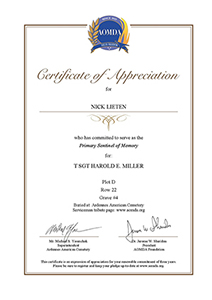 |
Before the war
Harold was born on the 20th of June in 1907 and he grew up in McLean County, Illinois (USA). Harold was the son of Edward and Florence Miller. He had one sister, Mildred. Harold lived the bigger part of his life in Winnebago County, Illinois.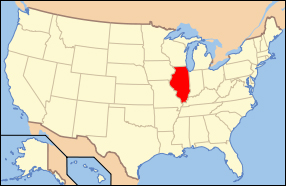 Illinois, United States |
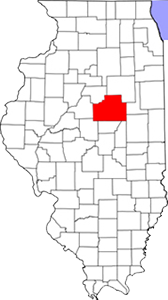 McLean County, Illinois |
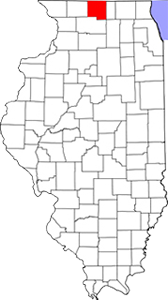 Winnebago County, Illinois |
Harold was the only boy with the Miller name, this seemed very important to his aunts as they were interested in someone carrying on the family name. In the early years Harold and his family stayed with his mothers parents until they found a larger place to rent. When his mother got ill, her family moved in with them.
There's a funny story about Harold and Mildred. One day when Harold was in class in first grade, his mother decided to go downtown. She had given Mildred a bath but hadn't dressed her. Mildred was missing her brother and went looking for him. Florence noticed she was missing when she came home and went looking for her. The neighbours had seen the little Mildred going toward the school. In the meantime Mildred, innocently nude as a little girl, arrived at Harold's class room. The teacher askekd if anyone knew this little girl, but Harold didn't say a word. He was too embarrassed to claim her as his little sister. Mother arrived and took Mildred home. Harold never let Mildred forget her escapade.
In 1912, when the Titanic sunk, Harold was very upset by this dramatic event that he couldn't sleep nights for worrying about it, according to his mother. It must have been frightful and exciting news for a child at that time.
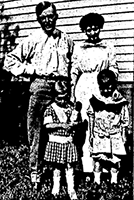 Edward, Florence, Mildred and Harold |
In December 1913, Harold's mother died of tuberculosis at their home in Clanton, Illinois. The doctor took the children to see their dead mother, she was lying on their father's lap. Florence was 25 when she died.
After Florence died, the children went to live with the Miller family in Jacksonville, Illinois. Though the Smith family wanted to take care for Mildred, Edward and Harold's grandfather didn't want the children to be separated.
The children were very upset about losing their mother. About 5 months after her death, little Mildred disappeared. After looking everywhere she was found in the cemetery holding an umbrella over her mother's grave to shield it from the rain.
Mildred and Harold were very cute and they danced well. They liked to put on a show. It so happened that their talents came to the attention of a vaudeville showman who visited Jacksonville. He wanted to take them on the road as child protegees. In those days vaudeville was the popular entertainment. The family wouldn't let them leave though.
 Harold ready to dance |
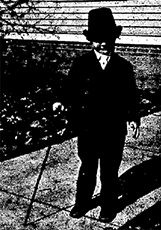 Mildred ready for stage |
In 1919 Harold was appointed as a Page to a Woodmen Convention. His uncle worked his way up in the Modern Woodman Insurance Co and had enough influence to give Harold this honor. A Page boy is a boy who runs errands and other chores for the Delegates and Officers at a convention. Its not sure if Harold was able to serve as a Page boy however, since the family moved to Rockford in 1919.
Harold and Mildred moved back in with their father, along with grandma Miller, their aunt Martha and aunt Francis. By this time Harold and Mildred were in grade school. When Mildred got married to Harry Wenberg on June 20, 1928, Harold and his aunt Martha moved in with them.
Harold was a party animal and was very popular among the girls. He was like a modern casanova, good looking and an excellent dancer, all the girls wanted to dance with him. In addition, he was a great talker and had lot of little nothings to whisper.
Harold went to high school for 2 years. During one summer Harold got a job as a life guard at the lake at Miller Park (not named after the Miller family) in Bloomington, where his aunt Grace lived. He was an outstanding swimmer and diver. His room was full of trophies and ribbons.
In the '20s, Harold was a drummer in a local dance band. Dance bands were very popylar in this jazz era. He also went hunting and shot and killed a fox one day. He used a 32 caliber rifle while most rifles were 22s.
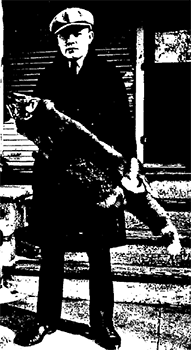 Harold and the fox he shot |
Edward, Harold's father, met Marion Pearsall in 1926, the same year grandma Miller died in January. She had four sons from her first marriage and one daughter. Mildred liked her stepsiter a lot. Earl, one of the stepbrothers liked Mildred a lot and wanted to date her, but Mildred didn't like him that well. In April 1929 Edward an Marion got married.
After the stock market crash in 1929, Edward was out of work and had a hard time paying bills. Harry and Mildred moved in with Edward and helped him pay bills etc. After a while, Edward got back to work so Harry and Mildred moved to an apartment with Harry's dad.
In the early 30s Harold lived with his aunt Martha in Chicago, but spent much time in Bloomington with his aunt Grace. In the mid 30s Harold moved to Bloomington with his aunt Grace. He went from one job to another and sometimes even had more than one. He seemed to like selling Real Silk Hosiery door to door, selling ladies shoes and working for the bookies. For a while he had a job at the soda fountain in the Walgreen Drug Store at the corner of Main and Washington Streets across from the McLean County Court House.
After aunt Martha started managing appartment hotels in Chicago, Harold moved in with her. The Millers all liked watching movies, so when relatives came over, they always went to see at least one per visit. He also liked cooking very much. When visitors came, he tried to prepare something special.
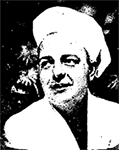 Harold the Chef |
One time, upon coming home from work, Harold was attacked with one of those flat whiskey bottles. No one knew who did it, but Harold suffered some damage and had a bandage on his face, but it could have been a lot worse. There's no clue if he was robbed or if he was unconscious for a while.
Harold moved in with Mildred and Harry in Rockford again in 1938.
In May 1939 Harold's father became very ill. He had an acute attack of appendicitis. Edward didn't want to go to hospital immediately, despite the pain. Edward died on May 28, 1939.
Harold now had a job where he earned $ 15 a week. He had to work very hard and was always too tired to go out at night.
Harold never got married and was single when he enlisted in the army. In the summer of 1941, when he was at Camp Croft, South Carolina, he met a beautiful young brunette and they started a relationship.
In the army
Harold enlisted in the army on October 15, 1940 in Peoria, Illinois, at the age of 33. After enlistment he was sent to Fort Bragg in North Carolina where he went training young soldiers. He taught them the use of bayonets, rifles, machine guns and grenades. Every night Harold was studying hard to prepare training for his men.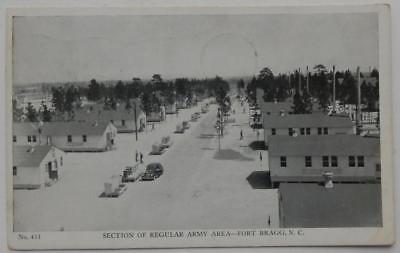 Fort Bragg, North Carolina |
In March 1941, Harold was transferred to Camp Croft in South Carolina, he was promoted to corporal. Harold was hoping to receive mail from family, but didn't receive any. He wrote home to ask why some of them don't write him. He believes that when someone is in the army, he sure likes to hear from home.
In June of that same year he was promoted to sergeant and he led a platoon that existed of 53 soldiers and 2 corporals, he wanted a fighting unit.
It was during this period he started going out with a beautiful 27 year girl, Elsie Woolard, a fine girl from a good old southern family. She was a pretty brunette about 5 ft 7 in tall, 112 lbs and a college graduate. They met in March and started going together in June. Before he left the army, they planned to be married.
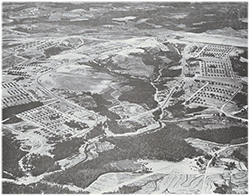 Camp Croft, South Carolina |
After the attack on Pearl Harbor, the Americans joined the army to fight with the allies and the war became a real World War. Harold though, had no business fighting overseas. The army continued to shift him from base to base in the USA to postpone his going abroad. Harold often talked about getting a furlough and visiting all his relatives, but somehow he was put off and put off.
In April 1942 Harold was promoted to Staff Sergeant at Fort Bragg in North Carolina. The 78th division, 309th infrantry regiment was re-activated. He had to do a course so he could learn his men aerial map photography and map reading. There were about 70.000 soldiers at Fort Bragg. Harold earned 84 dollar/month in that period.
There was a rumour that they might be transfered to Fort Mead sometime soon. Harold thought that would be great. He wanted to see New York, Washington and Baltimore.
In May 1942 Harold joined a class of 250 men learning to be teachers. About half of them would be 2nd Lieutenants in a year. Harold didn't know if he wanted to become a Lieutenant or not. They seemed to get all the dirty work and the buck was passed to them. He thought the rank of Staff Sergeant was just fine.
In June 1942 Harold went back to school again. They were teaching the very same things that he had been learning at Camp Croft for 15 months.He thought the 2nd Lieutenants were the ones that needed schooling. They were just out of college and knew very little about military ways and things. Some of them made pretty bad mistakes. He hated to think of following one of these into battle. There were some good ones too, but as soon as they got to know something, they disappeared.
In July 1942 Harold was transferred to Camp Butner in North Carolina, a newly half finished camp. His unit was to become a combat ready unit. It took between 7 and 10 months before they would leave for overseas. They were expecting new men in a month.
At the end of September 1942, they were still waiting for the new men in the camp. His group was working on field problems and practicing taking machine gun emplacements. They had been doing that sort of thing so often that he felt he could do it in his sleep. However, he supposed the more practice they got, the better it would be for them.
At last letters were coming from all of his folks and he was trying to keep answering them, a few each night. He was staying home quite a bit or going to the post movie. He lived just a block from the theater and two from the Service Club where they had a dance once a week. He had lots of fun at the dances.
By the end of October 1942 they had received 53 men but they were in the 2nd Platoon so Harold didn't have anything to do with them. He didn't like the outfit and was trying every day to get out of it. It was a poorly run organization by his estimate.
One day Harold wrote to his aunt Alice: "I am on guard today. I have to stay here in the guard house and guard the prisoners. We have only nine now. One got out this morning. This guard house is only a small one. It belongs to the regiment. The main stockade is full of boys. Most of them are in for going AWOL to see their girlfriends. As a rule they get three days in the guard house for every day they are gone. Thus, a man who stays away seven days will be sentenced to twenty-one days without pay. He also will have to make up the 21 days after the war ... I am taking chemical warfare now. I have better instructors than Junior (he means George Hatzenbuhler, his cousin) had because our officers were actually under gas during the last war or have had extensive courses in it. You wouldn't know me anymore. I know all about the different types of guns, can take them all apart and explain how they operate. I have classes just like any teacher at school. We have our examination each week on all subjects. Also I work in the field. We practice days at a time for the time we will meet the enemy in battle, and when we do we will win."
Harold continued to study for a second Lt. promotion, but he didn’t really want the responsibility. In November 1942, Camp Butner was receiving hundreds of men everyday. This meant mass confusion. Harold’s old outfit, the 9th Division, was in Africa, he wishes he was with them.
In August 1943 he was still training troops at Camp Butner. He had a chance to go to Chicago in an Army Transport plane. He wanted to go and visit the folks in Mansfield but didn't have the money. It might be the only chance to see them.
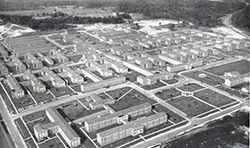 Camp Butner, North Carolina |
In September 1943 Harold was sent to Virginia for a week. His outfit camped in Prince Edward's Forest. This was a state game reserve and a beautiful place. There were two very nice lakes where they went swimming every day, also boating. It was a sort of military vacation. The weather was fine and the trip both ways was interesting.
In December 1943 Harold tells the familiy about his girl again. "She is one of the nicest women in Henderson. Her family is one of the oldest in these parts and have quite a bit of money. She herself owns the largest and best drugstore in the city. She is a member of the best country club and a leader in all the social doing that take place. She dresses beautifully and just right all the time. To top it off she is the nicest girl I have ever known. She gave me a wool knitted sweater for Christmas. I gave her a beautiful box of candy and a corsage of gardenias. Who knows, we may get married someday..."
Harold's outfit were learning how to attack fortified positions such as pill boxes using flame throwers, nitroglycerin and dynamite. This was an indication they were going to fight the Germans in Europe.
In January 1944, Harold visited his mother, his sister Mildred and her newborn son Richard. Harold’s last words to his sister were “I’ll write u from Berlin”!
In February 1944 Harold went on manoeuvers in Tennessee for 2 months. Then he went to Camp Pickett in Virginia where he continued training inexperienced troops 7 days a week for what would be D-Day. Thousands of men poured into camp. Harold felt the army was rushing the men through training too fast.
In March 1944 they were getting all the men that were on manoeuvres ready for shipping. Just the NCO's would remain behind. It was tough seeing all his friends pulling out. No doubt to take part in the big invasion.
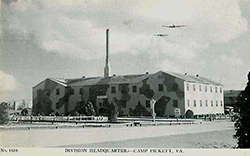 Camp Pickett, Virginia |
In May 1944 Harold was still at Camp Pickett working harder than ever. They even had the fellows on the firing range on Sundays. The men were being rushed through too fast it seemed. They seldom had a Sunday off. Harold sprained his left shoulder and had to go over to the hospital three times a week for Infra Red & massage treatments. He felt it was better and that the shoulder would be ok in a little while.
In July 1944 Harold was in Henderson, North Carolina. He got hit by a car while waiting for his girlfriend at the bus station to go to a family picnic. Some kid was trying to miss someone else and hit him instead. The driver was not paying attention. Harold suffered from a deep chest wound and several stitches in the face. The driver was charged with careless and reckless driving. Harold spent about a month in hospital. There he met a soldier from his old 9th division. The soldier told him only 17 men from that unit were still alive. It was the group that was sent to Africa.
In October 1944 Harold had a short time at a staging area, during which he was able to enjoy a visit in New York City before embarking.
On November 1, 1944 Harold wrote "At least I'm on the 'hi sea'. I don't know where we're going however." Harold was sent to Europe where they could finally fight the Germans. His unit arrived in England where they were lodged in a town called Bournemouth, which was approximately 3 hours by train from London. It took some time, but Harold finally got to visit London where he found where his grandmother Miller lived as a child and to do some general sightseeing. He stayed there only a short time. In a letter home he wrote: "If anything should happen I want you to let my girl in Henderson, North Carolina know, her address is: Miss Elsie Woolard, 203 Burwell Ave., Henderson, N.C. Phone #1. She is a swell person and her family is tops. I enjoy being with her a lot."
 |
Late November 1944 his outfit travelled by train in box cars through France into Belgium. Many towns and villages were bombed by both German and Allied forces. The two big trade items were cigarettes in France and soap in Belgium. A soldier could get just about anything for these two items. His outfit was living in mud and the weather was cold and raining.
On the 9th of December the division moved to the area of Lammersdorf in Germany where they would start their initial attacks against the enemy. Their first task was to attack and seize the towns of Bickerath and Simmerath. When the towns were cleared of German soldier, they had to move on to Kesternich.
The first field order for the 78th Division in World War II was published on December 11, 1944. Jump-off or attack time was set for December 13.
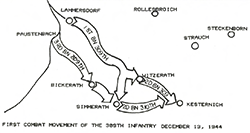 First combat movement of the 309th Infantry Regiment on December 13, 1944 |
These moves had not been without the unpleasantries of foul weather. There was also an introduction to the German buzz-bombs that regularly sailed overhead and occasionally dropped into the Division area. Along with the rain and mud there was now also the cold of the German winter. The roads were slippery with snow and the fields were blanketed with snow drifts.
In the early morning of the 13th in the cold and darkness the men of the 309th crawled from foxholes and wet cellars and moved forward over an unfriendly landscape which they knew only from maps. In almost total darkness they crossed the line of departure.
Harold's letters stopped coming. Letters sent to Harold were returned.
Death of Harold Miller
Harold was declared wounded and missing in action on December 13, 1944, that would have been during the first battle of Kesternich. It appears he was involved in the attack on Simmerath. He was one of the first to be wounded by machine gun fire. He most likely suffered a shoulder wound. He died only an hour after going into battle.All of his action was in the heart of the Siegfried Defense Line. An on site medic believed Harold was taken prisoner while wounded and got killed by a bayonet so the Germans could spare their ammo. The War Department declared Harold dead as of December 14, 1945. His remains were recovered in Bickerath, Germany. They found him thanks to his dog tags. When they found his body, his right femur and left tibia were fractured, his right mandible was missing and the body was already decomposing. Harold was buried at the American cemetery in Neupré (Belgium) on April 4, 1946.
The following information from a letter from Sergeant J.A. Wojeik (G Company, 309th Infantry Regiment) dated 24 May 1945, Germany, is the most detailed concerning Harold's experience: "Sergeant Miller received a penetrating wound in the shoulder from Machine Gun fire. The Company was in battle formation going into the attack on Simmerath. The platoons were deployed as resistance was encountered. The Sergeant was one of the first to be wounded. Aid man Rowell treated him succesfully and when finished was asked by Sgt Miller to please move on since others now needed his aid. The objective was reached and secured, but the Heinies had very strong patrols in the vicinity for many days. It is definitely known some of these patrols reached the general area Sgt Miller lay. The Germans were in desparate need of prisoners so as to ascertain the scope of our attack. We later found out the reason being their own winter offensive was being periled by our effort. They put up a fanatical resistance since their main supply route for their coming effort was in the line of our advance. Had we succeeded in reaching it there may have never been a Battle of the Bulge. The above is merely my own assumption. The casualties were heavy in the bitter, confused fighting. The medic believes Sgt Miller was taken prisoner. There is the possibility he is alive but do not lose sight of the fact there was heavy artillery fire plus the bitter fighting. All this was happening in the heart of the Siegfried Defense Line. The Sgt is still being carried 'Missing in Action' on the Company records. I am sorry I could not get you any more definite information. In the short time the Sgt was in combat, he had shown himself to be a good leader. He also showed the concern for others when being wounded. That trait is hard to find in wounded men."
Another eyewitness shared following information: "In a small wooded area behind Bickerath to the north lies 1 American body on top of the ground. Fighting took place in and around Bickerath from Sept. 14, 1944 to Dec. 14, 1944. It is believed that the deceased was killed by artillery fire." Informant: Josef Stollenwerk, Bickerath, Germany.
And another report states: "Soldier was wounded near Simmerath, Germany, and given first aid by an aid man. When a patrol was sent back to get him, no trace of this soldier was found".
The family somehow received the news that Harold was Wounded in Action on December 17, 1944. There was an article in the newspaper that he was Wounded in Action on December 13, 1944, maybe there was an error while communicating this to the rest of the family. Many letters were still written to Harold after December 13, 1944, not knowing he actually was Missing in Action, and most likely Killed in action. Some letters didn't return until March and even April 1945 with the message MISSING on it.
During Harold's short stay in the war, he earned a Purple Heart. He is buried at the Ardennes American Cemetery in Neupré in Belgium. His grave is located at plot D, row 22, grave 4.
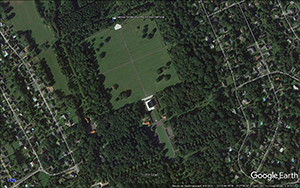
Ardennes American cemetery, Neupré, Belgium |
309th Infantry Regiment, 78th Infantry Division
 309th Infantry Regiment |
 78th Infantry Division |
 Technical Sergeant |
The 78th Infantry Division was first activated on August 23, 1917 at Camp Dix in New Jersey. The division existed of four infantry regiments: the 309th, 310th, 311th and 312th and three artillery regiments: the 307th, 308th and 309th.
It was until only May 1918 before the division was transferred to France to fight in the First World War. The 78th fought in three major campaigns: the Meuse Argonne offensive, the St. Mihiel offensive and the Lorraine offensive. Two soldiers of the division were awarded the Medal of Honor during these campaigns. It was demobilised in June 1919.
The division was reactivated during World War II on August 15, 1942 at Camp Buttner, North Carolina. It was designated as a replacement pool division. It remained like that until March 1, 1943 when the division was restored to field duty and to its training regimen.
After two years as a training division, the 78th embarked for the European Theatre from New York on 14 October 1944, whereupon they sailed for England. They arrived on 26 October 1944, and after further training crossed to France on 22 November 1944. On November 27 they were moved to Tongeren in Belgium and on the 7th they were transferred to Rotgen in Germany.
The 309th Infantry Regiment relieved the 1st Division in the region of Entenpfuhl between December 1 and 12. On December 13 they attacked the villages of Simmerath, Witzerath and Bickerath and were fighting for Kesternich. On December 18 Gerd von Rundstedt launched a counter attack in the region of Monschau.
The 78th Division held the area it had taken from the Siegfried line despite many violent German attacks throughout the winter. The Division attacked Kesternich on January 30, 1945 and took it February 2. On February 8 they took Schmidt and one day later they took the vital Schwmmanauel Dam.
During the coming weeks they crossed the Ruhr and the division joined the offensive of the First and Ninth Armies toward the Rhine on February 28. On March 8 the 310th Regiment crossed the Rhine over the Ludendorff Bridge at Remagen, the first troops to cross in the wake of the 9th Armored Division.
That unit, attached to the 9th Armored and acting as motorized unit had driven across Germany capturing Euskirchen, Rheinbach and Bad Neuenahr. The 78th Division expanded the bridgehead, taking Honnef and cutting part of the Autobahn on March 16.
From April 2 until May 8 the division was active in the reduction of the Ruhr Pocket and at VE-day it was stationed near Marburg. It remained on occupation duty in Germany until it was deactivated on May 22, 1946.
The division took part in three major campaigns; Rhineland, Ardennes-Alsace and Central-Europe, and this during 125 days. Only one soldier received the Medal of Honor (John Edward Kelley of the 311th Infantry Regiment). In total 1.427 soldiers were killed in action, 6.103 got wounded, 231 were missing and 385 were taken prisoner of war.
Contact
I learned about adopting a war grave while surfing the internet. I immediately sent in a request to adopt a grave at the Henri-Chapelle cemetery in Belgium and got one assigned to me on June 13, 2012.After visiting the Ardennes American cemetery in Neupré later that year I did another request to adopt a grave on this cemetery and Harold E. Millers grave got assigned to me on January 2, 2013.
I started looking on the internet to find as much information as possible on this soldier, but I couldn’t find much. I requested a personnel file, but it got destroyed in a fire in 1973 and I had to pay a big amount for what they were able to recover.
One day my Dutch Facebook friend John Bessems tipped me to contact Andi Hunting, she seems to be an expert in finding relatives of American soldiers that are buried overseas. After mailing her, she answered me later that day and gave me the name of 2 relatives of Harold, along with their addresses and some hints for writing them.
Some days later I wrote letters to Richard and Stephen Wenberg, the sons of Harold's sister Mildred and Stephen Wenbergs wife, Ronette Wenberg, added me on Facebook. We talked and talked and I started mailing Ronette and Stephen frequently, and Stephen told me all this information on Harold you can find here. I’d like to thank them a lot for this, and also a big thank you to Andi for helping me find the relatives, and John for helping me find Andi!
Personal information
Technical Sergeant, U.S. ArmyService # 16017052
309th Infantry Regiment, 78th Infantry Division, B Company
Entered service from Peoria, Illinois on October 15, 1940 as a Private
Born: June 20, 1907
Hometown: McLean County, Illinois
Died: 13 December 1944
Status: finding of death (FOD)
Buried: Plot D, row 22, grave 4, Ardennes American Cemetery, Neupré, Belgium
Awards: Purple Heart
 Purple Heart |
Family
Father: Edward Miller (1884-1939)
Mother: Florence Smith (1888-1913)
Sister: Mildred (1908-2011)
More pictures
Harold Miller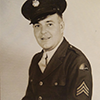
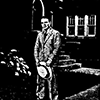
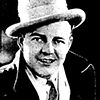
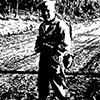
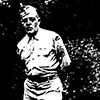
Grave
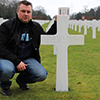
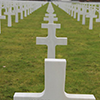
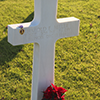
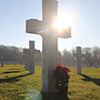
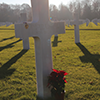

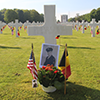
Ardennes American Cemetery
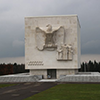
Newspaper articles
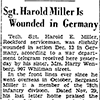
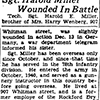

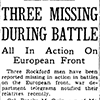
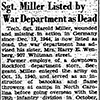
Diversen
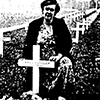
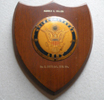
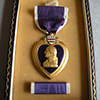
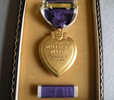
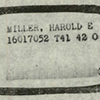
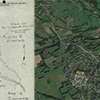
Documenten

Sources
Any information you can provide me about this soldier, can be mailed to me (nicklieten at hotmail.com). Thank you!